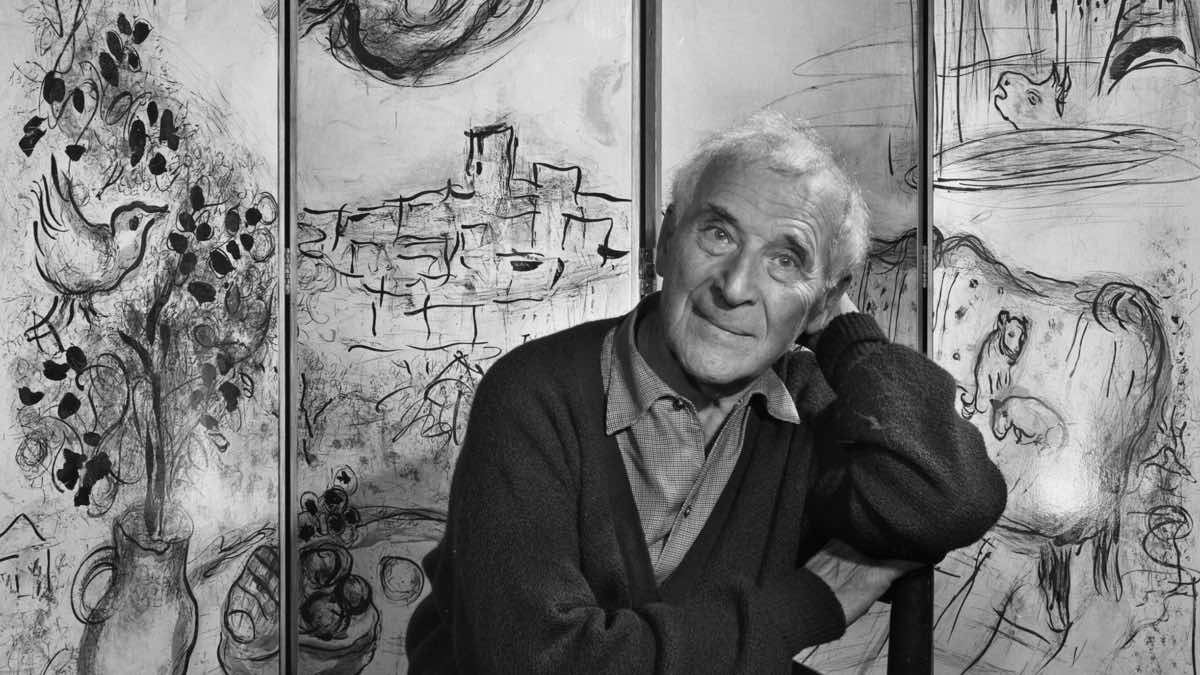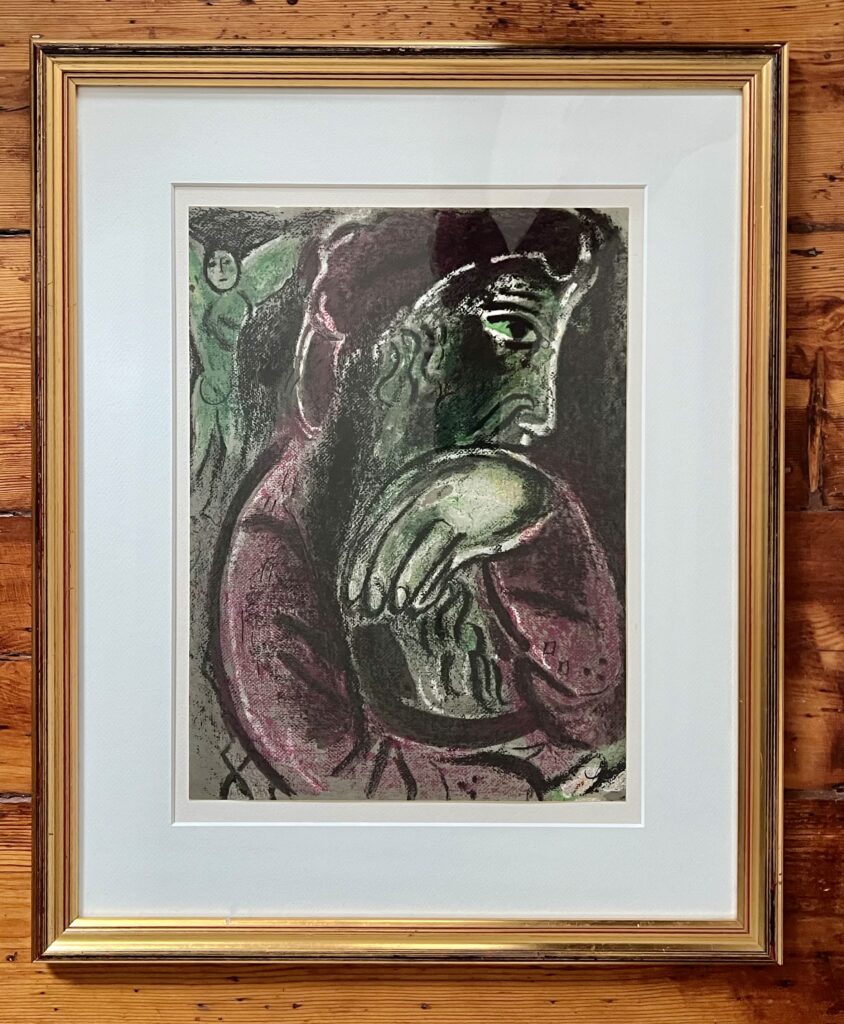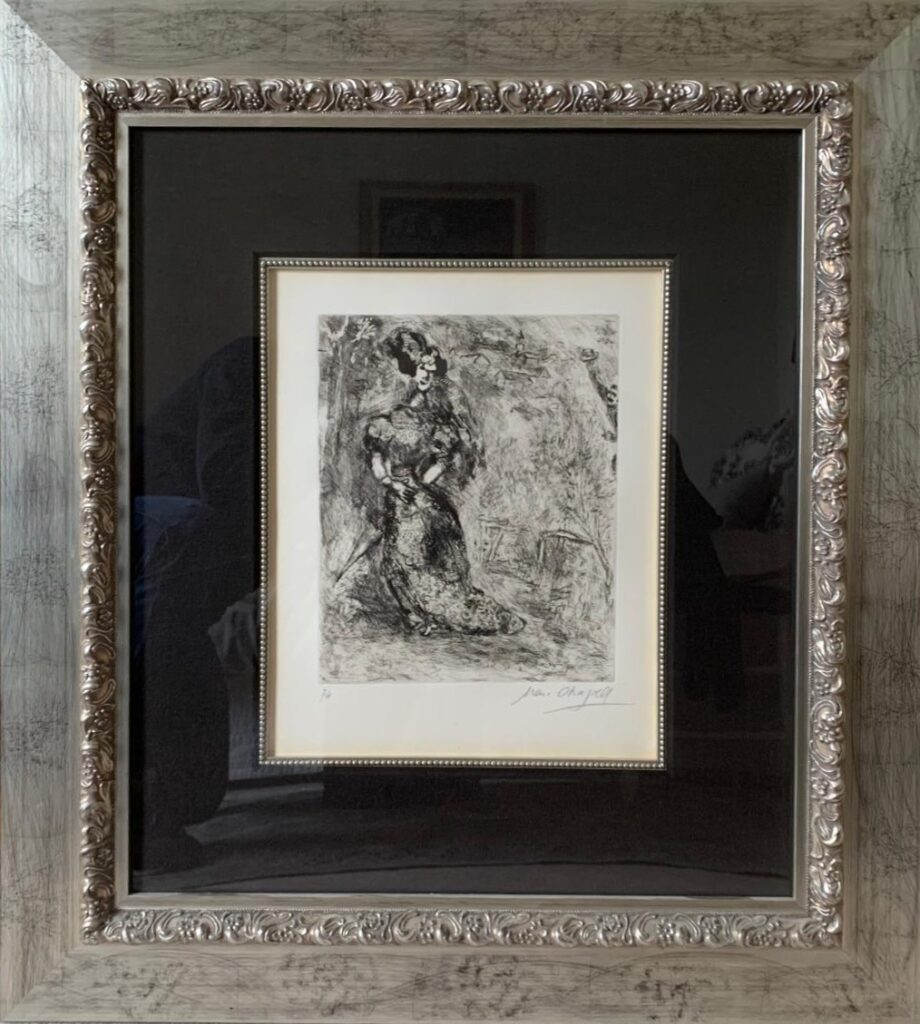


Marc Chagall
Marc Chagall (French/Russian, born July 7, 1887 – died March 28, 1985) was a pioneering 20th-century painter known for his poetic, dream-like works that blended magical realism with vibrant symbolism. Over his seven-decade career, Chagall explored Cubism and Fauvism, but ultimately developed a distinctive personal style that influenced Surrealist artists and continues to resonate today.
Born in Russia in 1887, Chagall moved to France in 1910, joining the École de Paris. He participated in the Salon des Indépendants and the Salon d’Automne in 1912, and held his first solo exhibition in 1914 at Der Sturm gallery in Berlin. During a visit to Russia in 1914, he met and married Bella Rosenfeld, who became a central subject of his work, including the painting Bella with White Collar (1917). The outbreak of war forced Chagall and his wife to stay in Vitebsk, where he became Commissar for Art in 1918 and founded the Vitebsk Popular Art School.
In 1923, Chagall returned to Paris, where he developed a friendship with dealer Ambroise Vollard, who commissioned a series of paintings based on the Old Testament. Alongside Jewish themes like Green Violinist (1923–1924) and Dancing Mirjam (1931), Chagall incorporated Christian motifs into his work.
During World War II, Chagall fled to the United States, where he held a retrospective at The Museum of Modern Art in New York in 1946. He returned to France in 1948, though he continued to travel for commissions and pleasure. Known for his versatility, Chagall also created stained-glass windows, including those at the Hadassah University Medical Center in Jerusalem (1962), and the Peace window for the United Nations (1964). A major retrospective of his work was held at the Philadelphia Museum of Art in 1985, the same year he passed away in Saint-Paul-de-Vence, France, at the age of 97.



